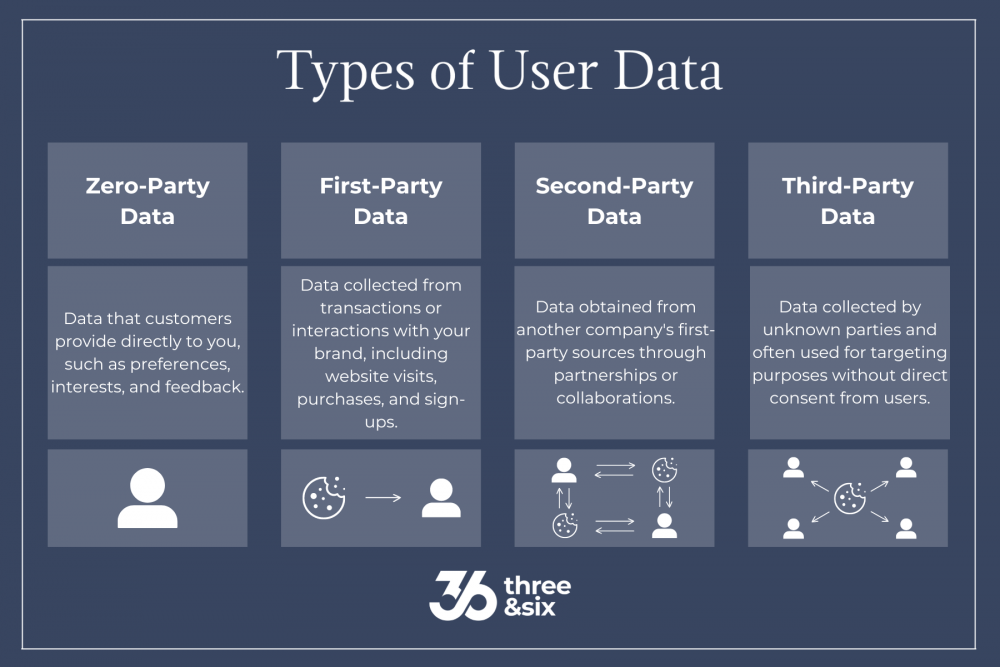In the ever-evolving landscape of digital marketing, one of the most significant shifts in recent years has been the deprecation of third-party cookies. As we move further into 2024, the impact of this change is becoming increasingly apparent.
NB: This is an article from three&six, one of our Expert Partners
Subscribe to our weekly newsletter and stay up to date
With Google Chrome taking steps to restrict third-party cookies by default, marketers are faced with the challenge of adapting their strategies to maintain effective targeting and measurement capabilities while respecting user privacy.
The Categories of Data Used for Targeting
To navigate the changing landscape, it’s crucial to understand the categories of data used for targeting. As marketers, we classify data into four categories, ranging from zero-party data to third-party data. The categorization hinges on the data’s source.

Embracing Universal IDs
Universal IDs have emerged as a solution for tracking users across devices and platforms without relying on third-party cookies. These unique identifiers, developed by various tech companies, leverage both first-party and offline data to create comprehensive user profiles.
Leveraging First-Party Data
First-party data is more important than ever in a post-cookie world. Marketers can leverage first-party data for:
Audience Segmentation: Segmenting first-party data allows for targeted messaging and personalized experiences tailored to specific customer segments.
Look-a-like Audiences: Platforms often offer the ability to create look-alike audiences based on first-party data, expanding reach while maintaining relevance.
Notable Changes to User Privacy
The path toward third-party cookie deprecation has been characterized by noteworthy milestones in user privacy regulation and browser restrictions. From the CAN-SPAM Act in 2003 to the recent enforcement of the California Privacy Rights Act (CPRA) in 2023, regulators and tech companies have taken steps to prioritize user privacy.
Cookie Deprecation in 2024: What Marketers Need to Know
Google Chrome’s gradual restriction of third-party cookies underscores the need for marketers to adapt their strategies. Here’s what marketers can do to navigate the changes:
Prepare for Third-Party Cookie Restrictions: With Chrome progressively restricting third-party cookies, marketers need to prepare for alternative targeting and measurement methods.
Invest in a Variety of Targeting Approaches: Explore alternative targeting mechanisms, including contextual targeting and Google’s Privacy Sandbox initiatives like the Protected Audience API.
Embrace New Campaign Performance Measurement Approaches: Test attribution reporting APIs and explore data clean rooms as alternatives for measuring campaign performance in a privacy-preserving manner.
Zero- and First-Party Data Collection: Prioritize the collection and utilization of zero- and first-party data to fill in the gaps left by third-party cookies. Transparent and ethical data collection practices are key to building high-quality audience profiles and driving effective advertising efforts.
Saying Goodbye to Third-Party Cookies
As we bid farewell to third-party cookies, marketers must embrace new strategies and technologies to maintain effective targeting and measurement capabilities while respecting user privacy.
By investing in alternative targeting approaches, embracing new measurement methodologies, and prioritizing zero and first-party data collection, marketers can navigate the post-cookie landscape with confidence and success.





